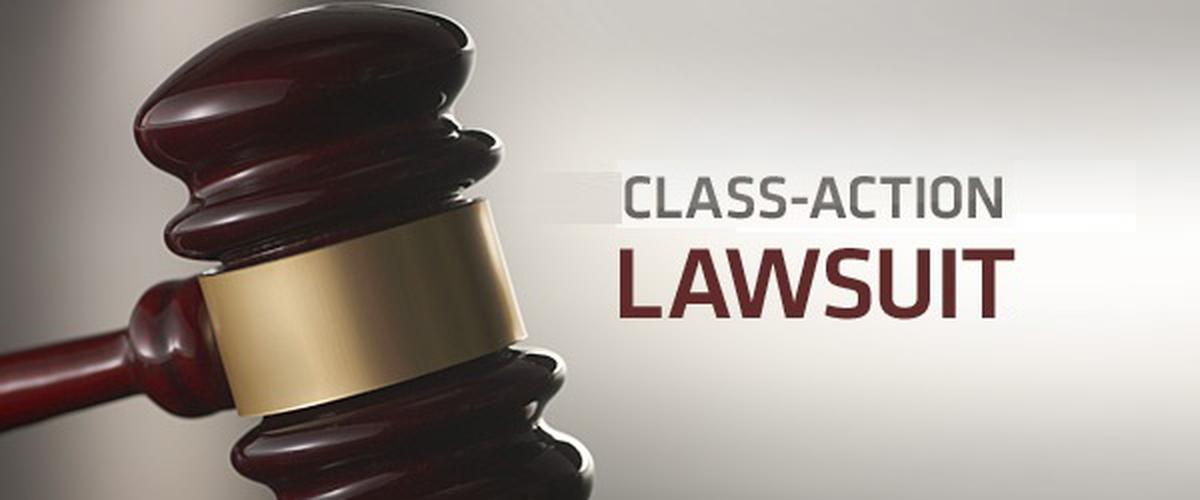Assertio Class Action Lawsuit Breakdown: Your Legal Companion
Wiki Article
Exploring Course Activity Suits: What You Need to Know
Class activity claims have actually come to be significantly prevalent in today's legal landscape, with individuals signing up with forces to seek redress versus companies and companies. In this conversation, we will check out the ins and outs of class activity claims, shedding light on their interpretation, the requirements for filing, and the potential advantages and disadvantages involved. Moreover, we will dig into the steps associated with a class activity claim and take a look at some current site cases that have shaped this location of legislation. Understanding the complexities and nuances of class activity claims is important for anybody seeking justice in a collective way, so allow's start our exploration with each other.The Meaning of Course Activity Suits
A class action legal action is a lawful activity submitted by a group of people who have similar insurance claims versus an accused. Course activity legal actions are generally brought when the number of potential complainants is also large for specific legal actions to be useful.One of the crucial elements of a course action suit is that the lead complainant, additionally understood as the class rep, stands for the passions of all the class members. The court assigns the lead plaintiff based upon their capability to fairly and sufficiently stand for the course. The lead plaintiff works carefully with the course action lawyer to build a solid case and seek compensation or other treatments in support of the entire course.
In order for a course action lawsuit to proceed, the court should license the course. This means that the court identifies that the lawsuit satisfies certain demands, such as numerosity (a huge sufficient number of class members), commonness (common concerns of regulation or reality), typicality (the insurance claims of the lead complainant are normal of the course), and competence of depiction (the lead plaintiff and course advise are qualified of standing for the course's passions) As soon as the class is certified, the claim can progress, and any judgment or settlement got to will apply to all course members unless they select to opt-out.
Class activity suits serve a vital objective in offering access to justice for people that might not have the sources to pursue their claims individually. They also advertise efficiency in the legal system by combining similar claims into a single action, decreasing the problem on both the court and the celebrations involved.
Requirements for Filing a Class Activity Lawsuit

Another requirement is that the class must be sufficiently numerous. The exact number of course participants called for might differ depending upon the territory and the nature of the situation. It is normally anticipated that the course needs to be large enough that signing up with all the private plaintiffs into a solitary claim is much more efficient than having multiple different suits.
Additionally, it is necessary that the class representative, that is the private or entity bringing the suit in behalf of the course, has normal claims and defenses to those of the course members. The representative has to likewise be able to adequately and rather represent the passions of the entire course.

Advantages and Disadvantages of Class Action Lawsuits
Class activity claims use both benefits and drawbacks for plaintiffs and offenders associated with the lawful procedure. On the one hand, one of the significant benefits of course activity legal actions is that they give a cost-efficient and effective way for individuals with comparable claims to go after justice collectively. By consolidating countless comparable situations into one lawsuit, course actions simplify the legal process and conserve time and resources for both complainants and defendants.Another advantage of course action suits is that they allow individuals with limited sources to look for compensation for their damages. In cases where the possible recovery is little, specific claims may not be economically practical. By joining forces in a class activity, plaintiffs can merge their resources and increase their opportunities of getting a reasonable resolution.
In addition, class actions can promote social modification by holding companies accountable for their actions. By bringing focus to extensive misbehavior or defective products, course actions can press business to transform their methods, improve product safety and security, or carry out reforms.
Nonetheless, class actions also have drawbacks. One prospective negative aspect is that individual plaintiffs may have limited control over the litigation process and the supreme end result of the situation. The lead plaintiffs and their lawyers commonly make essential choices in support of the whole course, which may not constantly straighten with the specific passions of each class member.
Furthermore, course actions can be lengthy and lengthy, often taking years to reach a resolution. The complexity and dimension of these legal actions can result in hold-ups and long term litigation, which can be annoying for both plaintiffs and defendants looking for a timely resolution.
Steps Associated With a Class Action Suit
The process of a class activity suit usually begins with the identification of a prospective course and the filing of a grievance. When a team of individuals that share comparable insurance claims against an offender is recognized, the lead plaintiff, or class representative, files an issue on part of the whole class. This issue details the alleged wrongdoing and seeks damages or various other relief for all members of the class.After the grievance is submitted, the court will certainly establish whether the situation satisfies the requirements for class certification. These requirements normally consist of numerosity (a large sufficient course), commonness (similar lawful cases), typicality (the lead complainant's cases are depictive of the class), and adequacy of representation (the lead complainant and their lawyer can appropriately represent the class's rate of interests)
If the court accredits the course, notification is given to all potential course participants, providing the possibility to opt-out if they desire to seek their very own individual insurance claims - Future FinTech class action lawsuit. If an adequate variety of course participants remain, the situation will continue to the discovery stage, where both sides collect proof and information pertinent to the insurance claims
Complying with exploration, the events might involve in settlement negotiations or proceed to test. If the case mosts likely to test and the class dominates, the court will identify the suitable problems or relief to be awarded to the course members.
Current Site Class Activity Lawsuits
With a strong understanding of the steps entailed in a class activity lawsuit, it is now vital to examine some current landmark cases that have actually made a significant effect in the legal landscape. Future FinTech class action lawsuit. These situations have not just shaped the means class action claims are performed but have likewise caused modifications in numerous sectorsOne such site case is the Volkswagen exhausts detraction, which caused the largest course activity negotiation in automobile Continue background. In 2015, it was exposed that Volkswagen had actually mounted software application in their automobiles to rip off discharges examinations. This deception influenced numerous customers worldwide, causing a class action claim. The negotiation gotten to in 2016 amounted to approximately $15 billion, compensating affected car owners and imposing fines on Volkswagen.
Another notable situation is the Johnson & Johnson talcum powder check out here claim. Thousands of ladies submitted claims against the business, declaring that their talc items created ovarian cancer. In 2018, a court awarded $4.7 billion in problems to 22 plaintiffs. This situation elevated issues about the safety of baby powder and motivated Johnson & Johnson to modify their product labeling.
These current site situations demonstrate the power of course activity lawsuits in additional resources holding companies accountable for their activities and looking for justice for afflicted individuals. They act as examples of how class activity lawsuits can cause considerable modifications and shield the rights of customers.
Verdict
In conclusion, course activity suits are a legal system that enables a team of people to jointly look for justice for a common grievance. While they offer a number of advantages such as performance and cost-effectiveness, there are additionally downsides such as possible for minimal settlement and extensive lawful process. Recognizing the needs and actions entailed in submitting a course activity claim is essential for individuals seeking to seek this lawful method. Current site class action suits have highlighted the significance of such instances in promoting for consumer rights and corporate liability.One of the key components of a course action lawsuit is that the lead complainant, likewise understood as the class rep, represents the interests of all the course members.In order for a course action lawsuit to continue, the court should license the course. This means that the court establishes that the claim meets particular requirements, such as numerosity (a huge sufficient number of course members), commonness (common questions of law or reality), typicality (the cases of the lead complainant are typical of the class), and adequacy of depiction (the lead plaintiff and course counsel are capable of representing the class's passions) As soon as the course is accredited, the lawsuit can relocate onward, and any type of judgment or negotiation reached will apply to all course members unless they select to opt-out.
The procedure of a class action legal action usually starts with the identification of a prospective course and the filing of a grievance.
Report this wiki page